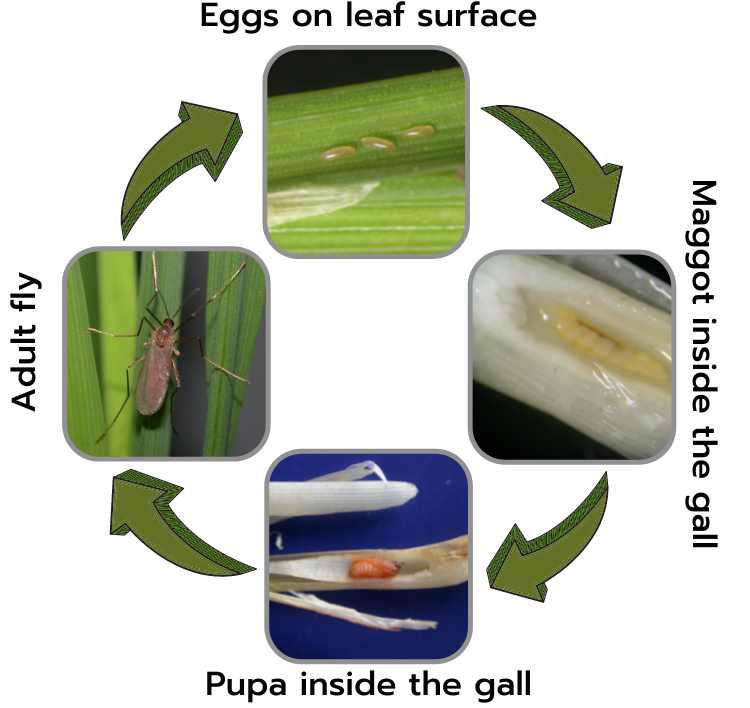
Rice gall midge can be identified from related species by the presence of unequal bifid cephalic horns at the anterior tip of the pupa. Female adult fly is larger than male and pinkish in colour with 12 antennal segments while male fly is brownish in colour and with 22 antennal segments. Adults live only for 24-48 h and are crepiscular in nature i.e., active during dawn and dusk.
Eggs are laid on the under surface of leaves or sometimes on the leaf sheaths, takes 4 days to hatch.
Maggots wriggle and crawl down between the leaf sheaths to reach apical meristem. Maggot feeding results in the development of gall due to the elongation of leaf sheath. Maggots undergo three instars before pupating inside the gall. Pupal period lasts about 6-8 days.

The pest causes damage mainly during the tillering stage of the rice crop. The maggots after emerging cause damage by feeding on the growing tip resulting in elongation of the leaf sheath which is known as "gall". The gall resembling an onion leaf glistens in the field, hence is often called a "silver shoot". Galls appear within a week after the maggot reaches the growing point. In some cases, there would be no gall development but necrosis of the growing tip is noticed. Profuse tillering and stunting of plants are associated with gall formation.
Grow resistant varieties like Surekha, Phalguna, Srikakulam sannalu, Kavya, Erramallellu, Jagtial sannalu.
If plantings are delayed, gall midge incidence will increase. Hence, always timely planting is important.
Application of fipronil 0.3 G @ 10 kg/ acre, 5 days before pulling seedlings from nursery for transplantation (in gall midge endemic areas).
If gall midge incidence was observed in the planted main field, apply fipronil 0.3 G @ 10 kg/acre or fipronil 5 SC @ 2.5 ml per liter water.